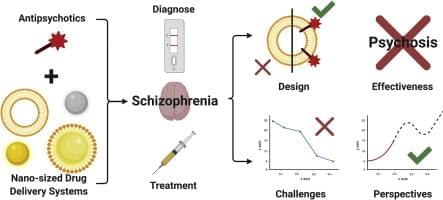Alix Burnard, 29, said she was so sick that she couldn’t leave the house without a cup to catch her phlegm and eventually couldn’t climb stairs.




A study of the mechanical forces in certain immune cells may give new insights into how organisms deal with ever-evolving pathogens.
To fight disease, many organisms have an adaptive immune system, which learns the molecular shapes of foreign elements (antigens) and remembers them to mount a defense against future infections. In vertebrates, the learning stage involves a remarkable cycle of evolution within an individual animal—a cycle called affinity maturation, which involves a type of immune cell called a B cell (Fig. 1). In this process, B cells are selected to have receptors that bind strongly to specific antigens. However, if these cells become too specialized, they risk becoming unresponsive to slightly mutated pathogens. Fortunately, the immune system can limit affinity maturation to retain a range of specificities for target pathogens. Just how the immune system is able to do that is the subject of a fascinating new study by Hongda Jiang and Shenshen Wang from the University of California, Los Angeles [1].

Year 2020 😗😁
Schizophrenia is one of the top 25 causes of global diseases burdens in terms of years lived with the disease and the emotional and economical strains it imposes on the society. Several strategies have been used to treat the patients, specially using typical and atypical psychoactives. However, due to its multifactorial characteristic and patient resistance, schizophrenia is still a difficult disease to diagnose and treat. Thus, new strategies for diagnostics and treatment must be researched to optimize the efficacy and reduce the side effects of the actual therapy. Nanomedicine tries to improve low-weight molecular agents for treatment of diseases through the use of nanoscaled carriers. Among nanomedicine, nanopsychiatry specifically deals with the potential role of nanotechnology in solving psychiatry diseases problems. Therefore, the objective of this work is to provide an overview of the state of the art of nanopsychiatry in the sense of treating schizophrenia.

Yesterday the U.S. Preventative Service Task Force (USPSTF) announced an updated recommendation for breast cancer screening focusing on encouraging more women to begin biennial (every other year) mammograms at age 40. This recommendation, available online now in draft form, is an update to the Task Force’s January 2016 recommendation that women aged 50 – 74 receive mammograms every other year. At the same time, the USPSTF noted that women in their 40s should make an individual choice regarding regular breast cancer screening.
The USPSTF, comprised of experts in disease prevention and evidence-based medicine, serves as an independent team striving to improve the health of people throughout the United States. The Task Force recommends preventative healthcare based on evidence and clinical data. While the recommendations levied by the Task Force pertain to various preventative services, including cancer screening, behavioral counseling, and preventive medicines, the group’s overarching focus remains to help stay healthy.
Importantly, the USPSTF does not conduct its own studies or clinical trials. Instead, this group reviews evidence on preventative approaches to different diseases to conclude the potential pros and cons of such measures.
Join us on Patreon! https://www.patreon.com/MichaelLustgartenPhD
Discount Links:
NAD+ Quantification: https://www.jinfiniti.com/intracellular-nad-test/
Use Code: ConquerAging At Checkout.
Green Tea: https://www.ochaandco.com/?ref=conqueraging.
Oral Microbiome: https://www.bristlehealth.com/?ref=michaellustgarten.
Epigenetic Testing: https://trudiagnostic.com/?irclickid=U-s3Ii2r7xyIU-LSYLyQdQ6…M0&irgwc=1
Use Code: CONQUERAGING
At-Home Blood Testing: https://getquantify.io/mlustgarten.

Summary: Researchers proposed the need for a legal framework to guide the conversation on whether or not human brain organoids can be considered people.
Brain organoids are grown from stem cells in a lab, mimicking the growth and structure of real brains. However, they do not fulfill the requirements to be considered natural persons, according to the researchers.
The study explores the potential juridical personhood of human brain organoids, and whether they can be considered legal entities.
Ktsimage/iStock.
So does that mean the internet will also crash by 2026? Well, it won’t if tech companies start using synthetic DNA instead of hard drives to store their data. You may not believe it, but according to Greef and his team, DNA strands can store large amounts of digital data, and in many ways, they have more advantages over modern-day data centers.

Researchers have engineered a robotic lionfish with synthetic arteries, similar to those found in a human’s circulatory system. The fish “blood” that runs through it serves as both the robot’s power source and controls its movement. The findings, published Wednesday in Nature, may propel the new wave of soft robots, in which inventors seek to improve lifelike automated machines for human connection.
Synthetic blood vessels in a new robotic fish could improve the technology needed to make lifelike robots run longer.

An unsettling report released barely a year ago painted a grim picture of the plastics industry—only about 5 percent of the 46 million annual tons of plastic waste in the US makes it to recycling facilities. The number is even more depressing after realizing that is roughly half of experts’ previous estimates. But if all that wasn’t enough, new information throws a heaping handful of salt on the wound: of the plastic that does make it to recycling, a lot of it is still released into the world as potentially toxic microplastics.
According to the pilot study recently published in the Journal of Hazardous Materials Advances focused on a single, modern facility, recycling plants’ wastewater contains a staggering number of microplastic particles. And as Wired explained on Friday, all those possibly toxic particulates have to go somewhere, i.e. potentially city water systems, or the larger environment.
The survey focusing on one new, unnamed facility examined its entire recycling process. This involves sorting, shredding, and melting plastics down into pellets. During those phases of recycling, however, the plastic waste is washed multiple times, which subsequently sheds particles smaller than 5 millimeters along the way. Despite factoring in the plant’s state-of-the-art filtration system designed to capture particulates as tiny as 50 microns, the facility still produced as many as 75 billion particles per cubic meter of wastewater.